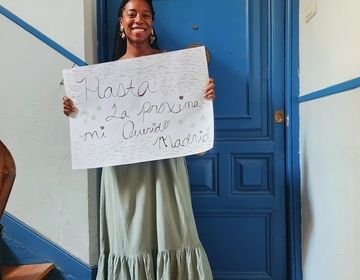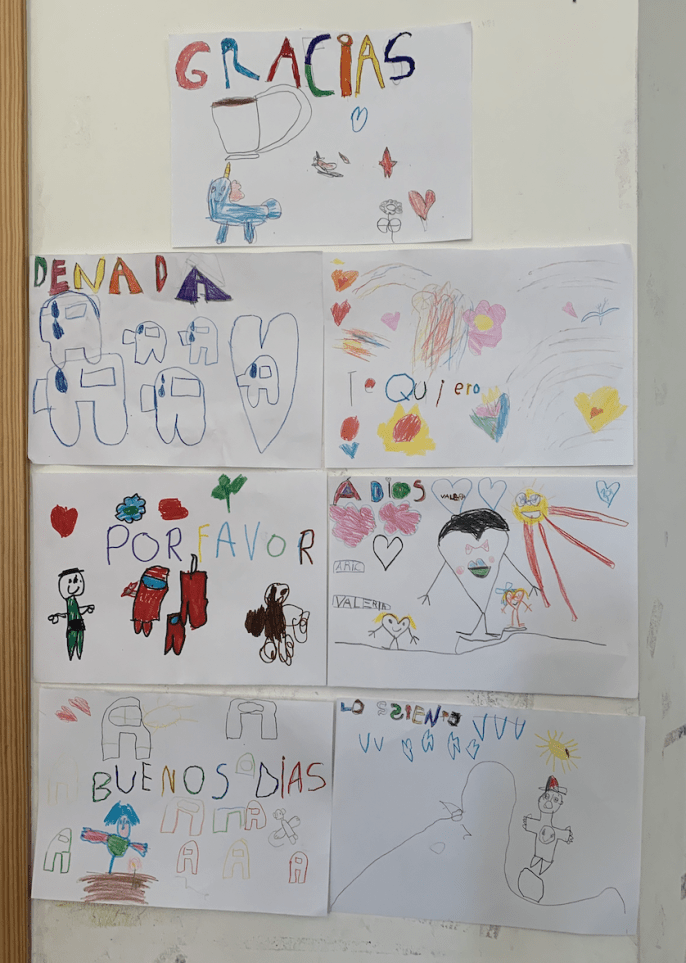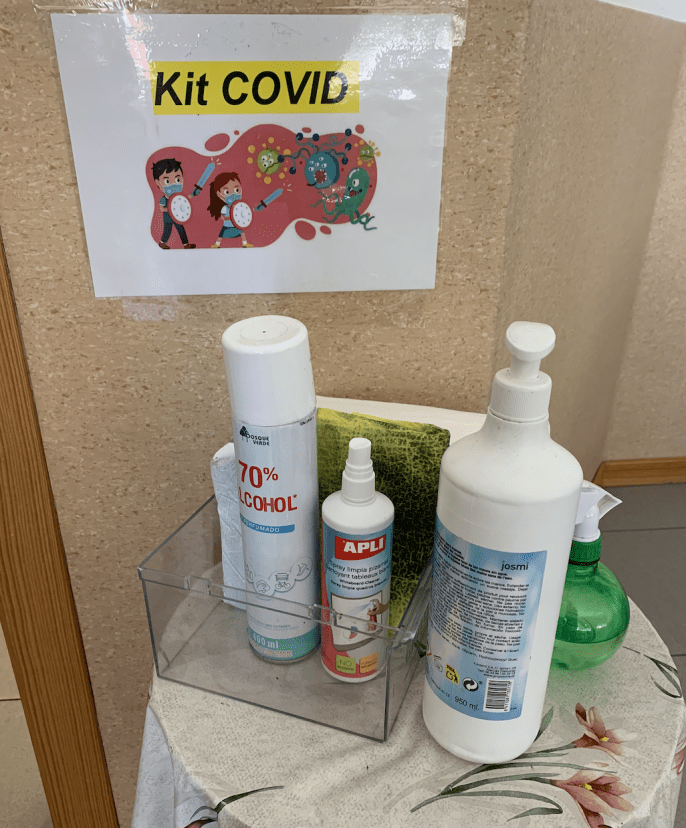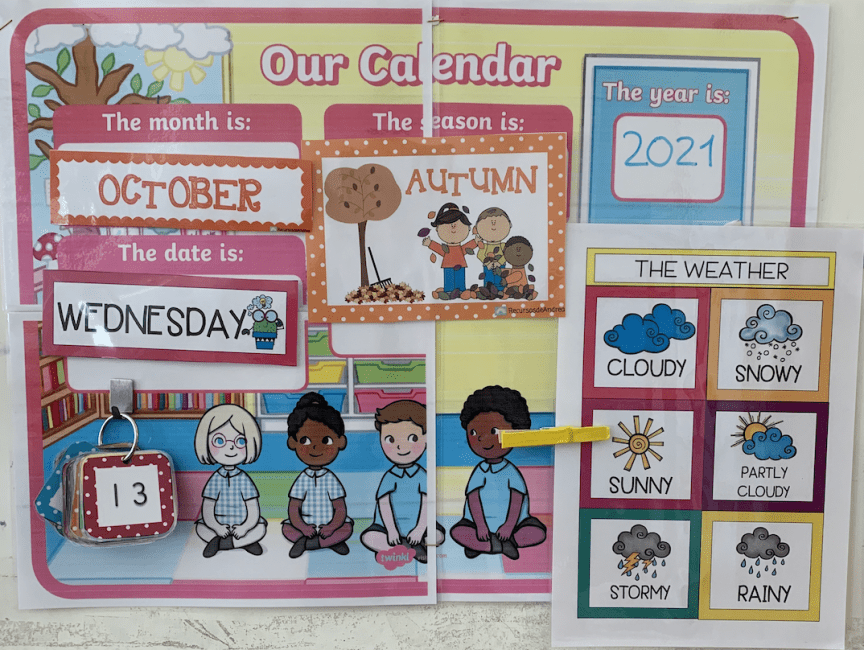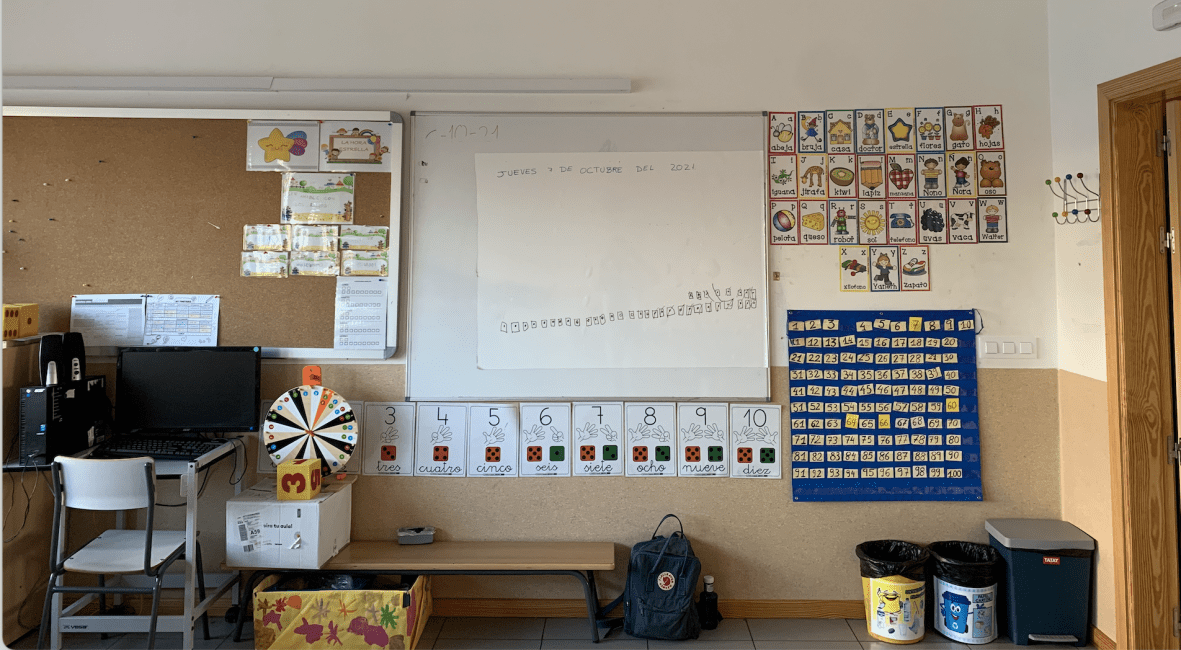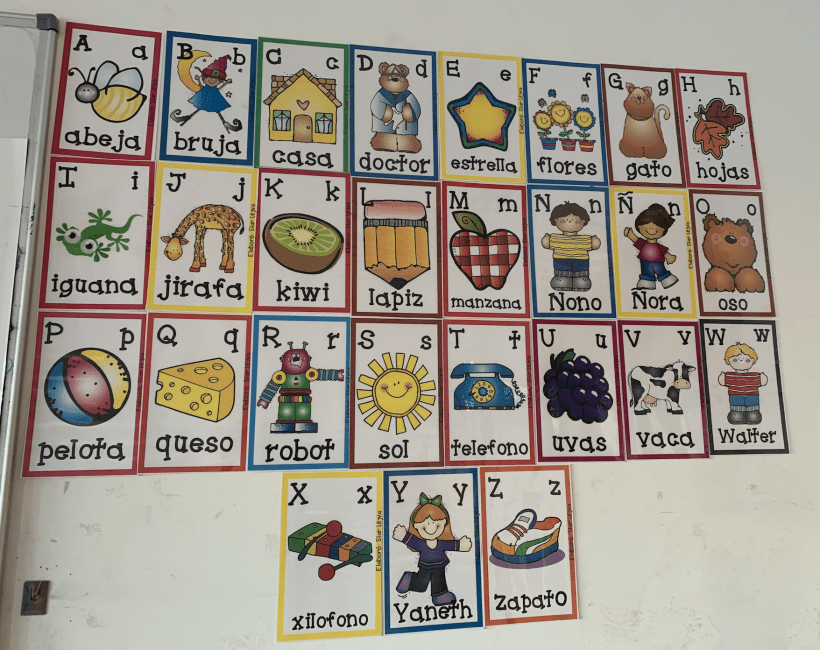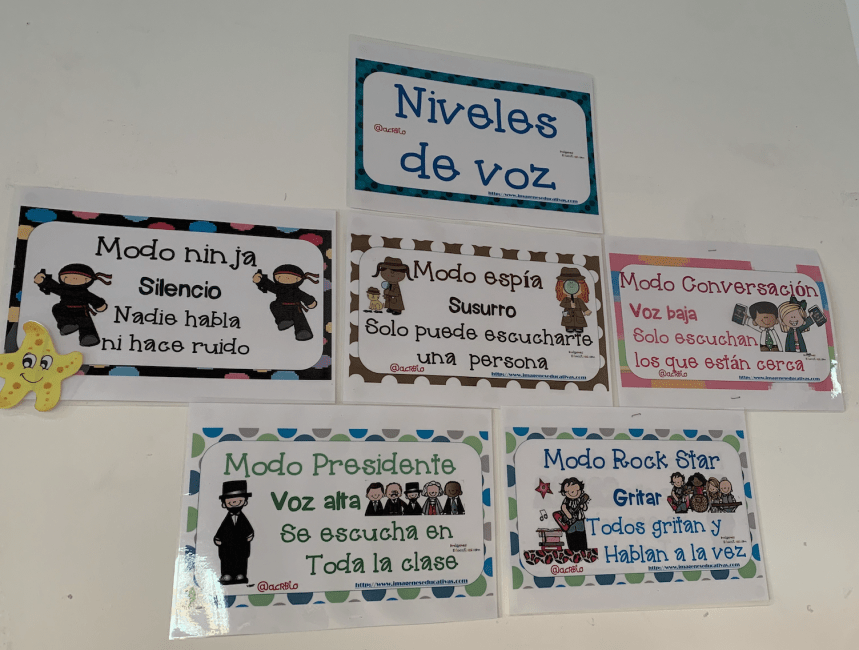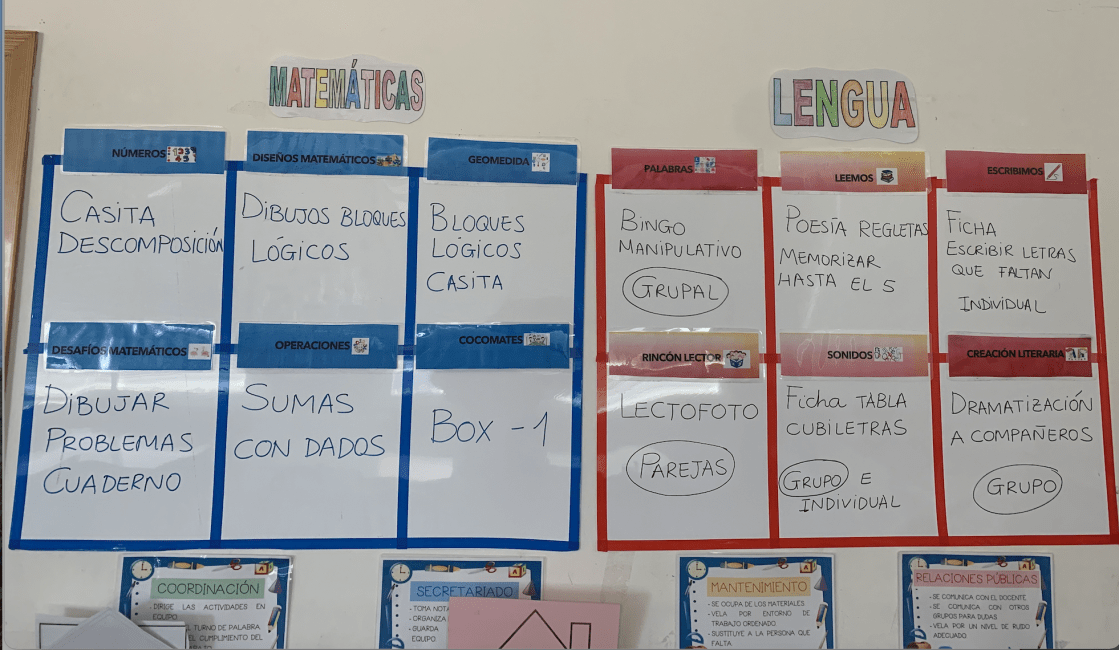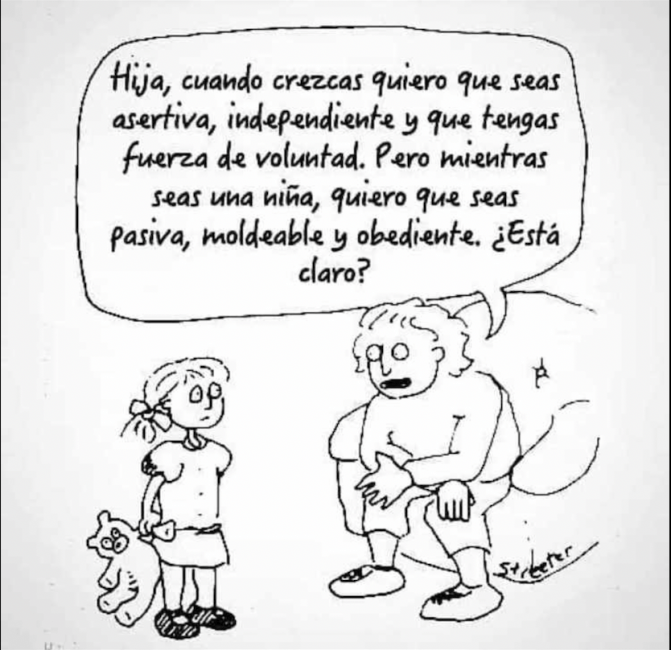Teacher Kira! Teacher Kira!
My Spanish students burst into the room each morning with contagious, excited, overwhelming fervor. At 9:15 on the dot, the first few kiddos sprint through the door and around the room, trying to take the other students’ chairs down from their place on top of the desks before they enter the classroom.
It’s been just over a week of classes with me, so, by now, they recognize me and shout “Teacher KIIIRRAAA (KEY-RUH)!!!” as they trail through the doorway, and many stop and give me a hearty hug before hovering in an area that will pass as their personal space before their main teacher chastises them for not sitting calmly.
They then pull in for morning circle time, and while the other teacher takes their temperature as a covid precaution, I say “good morning, how are you?” to most of the individual students to get them comfortable speaking. I am usually met with wide, blank stares full of confusion and hopefulness to understand me, which usually ends with them repeating after me— “I’m well, thank you. How are you?”. From here we go on with our routine of changing the calendar with songs— the day’s date, day of the week, month, year, and season— before reviewing the unit’s vocab words and diving into the interactive games that the other first-grade English teachers and I have collaborated on for our session.
Though I’ve settled into the groove of my role as a language assistant, when I arrived in Spain I was full of jitters, not knowing what to expect, but wanting to do the best job I could to help my unknown students learn.
THE PRE-TEACHING PREPARATIONS
When packing for my job as an Auxiliar, I had absolutely no idea what I was walking into aside from the fact that I would be teaching in a primary school. All of my research had shown that how my classes would be laid out, how much control I’d have over lesson planning, and which grade or mix of grades I’d teach would all be dependent upon my school’s needs and preferences. My mom is an elementary school teacher, so I figured that the best I could do to prepare was bring lightweight items from her classroom that could assist me with explaining America’s cultural centerpieces. I ended up bringing storybooks that depicted patriotic landmarks and songs, as well as classic Halloween, Thanksgiving, and Christmas traditions. I did research on a site called “Teachers Pay Teachers” to find activities for ELL (English Language Learners) and compiled those ideas— different takes on games like bingo, charades, and pictionary— into a google doc to fall back onto, in case I needed to improvise anything. Finally, I prepared three powerpoints about myself, basic English phrases, and family vocabulary. With those resources in a tote bag, I took off for my first day of school with a sense of anxious curiosity.
HOW IT WORKS
After a tour of the school, the other Auxes and I received our assignments— and I was absolutely THRILLED to be with first graders! After all, my materials were from my mom’s first-grade classroom. The way my school works is that the teachers move around to different classrooms, while the students stay together in one space. I teach 21 sessions total each week, all 45 minutes long, and spend the majority of time with 1st graders, who are between five and six years old. I have five sessions with preschool/kindergarteners, which, in Spain, are combined ages three through five, and just one session with 4th graders, who are around nine years old. In each class, I assist either one or two main teachers, who tend to take over the discipline aspect of the classroom, but who I share the lesson responsibility with.
EXPECTATION VS REALITY
I quickly realized that no matter how prepared I felt, I could not be stuck in my ideas of what should be taught in school or what level the students should be at. I found that the three most important principles to remember in this job are (1) adaptability, (2) patience, and (3) collaboration.
Although I had brought resources that I thought would be perfect for my first graders, my expectations of their English level was higher than what it was because, of course, English is not their first language. This early on in the year, the students are still learning basic introductions and greetings, and have just learned how to say “may I get a drink of water?” and “can I go to the bathroom?”— oftentimes needing reminders on how to phrase and pronounce these simple things. They cannot be expected to read full sentences from English language books quite yet, so I’ve adapted to make my lesson and game ideas much more visual by utilizing resources such as pictures, drawings, and puzzles, and I communicate with them using large, illustrative gestures.
My students are so sweet and try their best to understand what I am trying to say, but, in the end, I can’t respond to their questions in Spanish because they cannot know that I know any Spanish. Naturally, these kids are still young, so when they are learning English and feel this communication barrier, it is easy for them to get both bored or frustrated and, therefore, disengage. As a teacher, the way to combat this is with endless patience and practice. I find it effective to sit with the struggling student one on one, kneeling to their level and looking them in the eye while walking them through the words they are trying to say using clear gestures, and having them repeat after me multiple times. Additionally, during free time after the class finishes eating and before they go out to recess, I try to build relationships with the kids by showing them English games (rock, paper, scissors is a favorite) or by joining the ones they already have going (today was arm wrestling) in order to make them feel more willing to work with me in those difficult moments— to know that they can trust me, that I am trying to help them, and that, knowing this and seeing my reaction in their moment of frustration, they should be patient with themselves too.
Finally, collaboration with my fellow teachers is dually a comfort for me and an effective teaching tactic for the classes. I came with my prepared presentations but quickly understood that because the first-grade teachers moved classrooms themselves rather than sticking with the same students the whole day, they wanted to streamline their curriculum and lesson planning. In other words, they didn’t need me teaching a unit on family vocabulary when they were in the middle of reviewing school supplies because not only would that confuse the kids, but also it would be a waste because that unit was planned for a later date. We ended up having a short meeting after the first couple days of school where they shared a google drive with me to review the unit schedule, delegated responsibilities of coming up with each units’ introductory PowerPoint and contributing to various interactive games, and made it clear what they wanted out of me as an assistant teacher. Opening this line of communication was an essential and useful resource both in feeling a part of the teachers' overarching plan and in making the students’ language abilities flourish.
Overall, I don't regret making my material preparations because they will be useful at a later date, they made me feel more in control before I knew my school, and they showed the other teachers my capability to do a good job. However, I learned that this job is impossible without the help of my team, so it is important to be malleable to create the most prosperous learning environment for the students! I cannot wait to see what this year has in store for me, and I cannot wait to see the impact our teaching has on these students’ confidence in communication.
Related Posts

TWICE with CIEE: Kayleigh in Spain (PART 2)
Kayleigh is a CIEE alum who participated in CIEE's Teach in South Korea program AND CIEE’s Teach in Spain Volunteer program! CLICK HERE to read her experience in Korea. WHY... keep reading

CIEE Volunteer Spotlight: Meet Layla!
Where are you from? What was your academic background or career before teaching abroad? I am Canadian, specifically Québécoise. In Quebec, students are required to attend community college (CEGEP) before... keep reading
